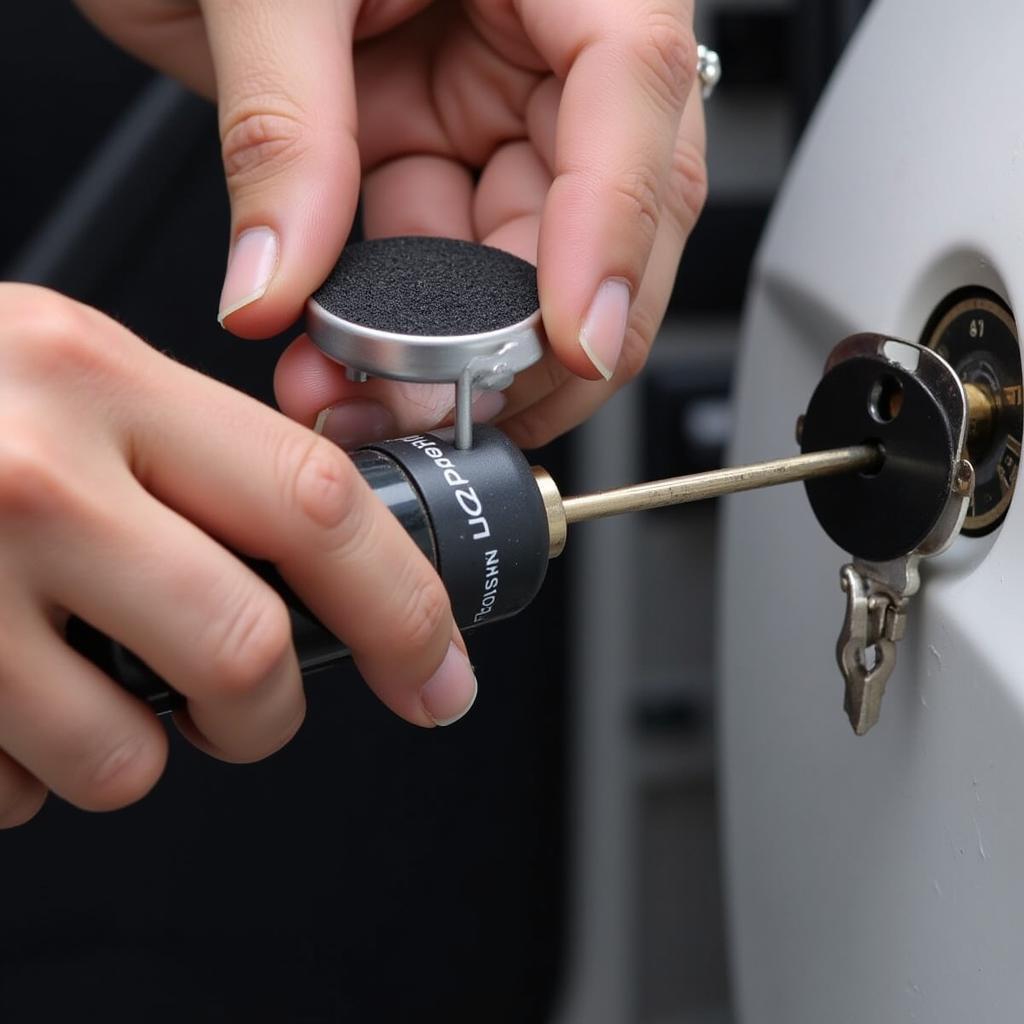A malfunctioning car lock cylinder can be a real headache. Whether you’re locked out of your car or dealing with a sticky lock, fixing car lock cylinder issues promptly is crucial. This guide will provide you with practical solutions for diagnosing and resolving these common automotive lock problems.
Understanding the inner workings of your car’s lock cylinder is the first step to effective troubleshooting. This seemingly simple mechanism is a complex assembly of tumblers, springs, and pins that must align perfectly for the key to turn. A single faulty component can disrupt the entire system. Need to fix other things? Check out how to fix car speedometer.
Common Car Lock Cylinder Problems
Several issues can plague your car’s lock cylinder. These range from simple problems like a frozen lock to more complex issues like a broken key stuck inside. Recognizing the symptoms can help you pinpoint the root cause and choose the appropriate fix.
Diagnosing a Sticky or Frozen Lock
A sticky or frozen lock can be caused by dirt, debris, or even extreme temperatures. Try lubricating the lock with a specialized graphite-based lubricant. Avoid using oil-based lubricants, as they can attract dust and worsen the problem in the long run.
 Frozen Car Lock Cylinder in Winter
Frozen Car Lock Cylinder in Winter
Dealing with a Broken Key
Extracting a broken key from the lock cylinder requires patience and the right tools. A broken key extractor, a slim and sturdy tool designed for this specific purpose, can be a lifesaver. If you’re not comfortable tackling this yourself, a professional locksmith can help.
Addressing a Worn-Out Lock Cylinder
Over time, the internal components of the lock cylinder can wear down, leading to difficulty turning the key or even complete lock failure. In such cases, replacing the entire lock cylinder is often the most practical solution.
Fixing Car Lock Cylinder: Step-by-Step Instructions
Let’s delve into some specific fixes for common car lock cylinder problems:
-
Lubricating a Sticky Lock: Insert the nozzle of the graphite lubricant into the keyhole and apply a short burst. Insert and remove the key several times to distribute the lubricant.
-
Extracting a Broken Key: Carefully insert the key extractor into the keyway alongside the broken key fragment. Try to hook the teeth of the extractor onto the key and gently pull it out.
-
Replacing the Lock Cylinder: This procedure varies depending on the car model. Consult your car’s repair manual or seek professional assistance. Having trouble with your car door fuse? See our guide on fixing fuse for car door.
Preventing Future Lock Cylinder Problems
Regular maintenance can prevent many lock cylinder issues. Keeping the lock clean and lubricated will help ensure smooth operation. Avoid forcing the key or using excessive pressure when turning the lock.
 Applying Graphite Lubricant to Car Lock Cylinder
Applying Graphite Lubricant to Car Lock Cylinder
Expert Insights on Car Lock Cylinders
“Regular maintenance is key to a healthy lock cylinder,” says John Smith, a seasoned automotive locksmith with over 20 years of experience. “A little preventive care can save you from a lot of headaches down the road.” Jane Doe, another expert in the field, adds, “Don’t underestimate the impact of weather on your car locks. Extreme temperatures can cause significant problems.”
Conclusion
Fixing car lock cylinder problems can range from simple DIY fixes to more complex repairs. By understanding the potential issues and following the steps outlined in this guide, you can often address these problems effectively. Remember, regular maintenance is essential for preventing future lock cylinder issues. Contact AutoTipPro at +1 (641) 206-8880 or visit our office at 500 N St Mary’s St, San Antonio, TX 78205, United States for assistance. We’re always here to help you keep your car in top shape.
 New Car Lock Cylinder Installation
New Car Lock Cylinder Installation
FAQ
-
What is the best lubricant for car lock cylinders? Graphite-based lubricants are ideal.
-
How do I remove a broken key from my car lock? Use a broken key extractor.
-
When should I replace my car lock cylinder? If it’s worn out or consistently malfunctioning.
-
Can I fix a car lock cylinder myself? Some fixes are DIY-friendly, while others require professional help.
-
How can I prevent car lock cylinder problems? Regular cleaning and lubrication are key.
-
What should I do if my car key gets stuck in the ignition? Try jiggling the steering wheel while gently pulling the key.
-
Where can I find a professional locksmith for car lock cylinder repairs? Search online directories or ask for recommendations.






Leave a Reply